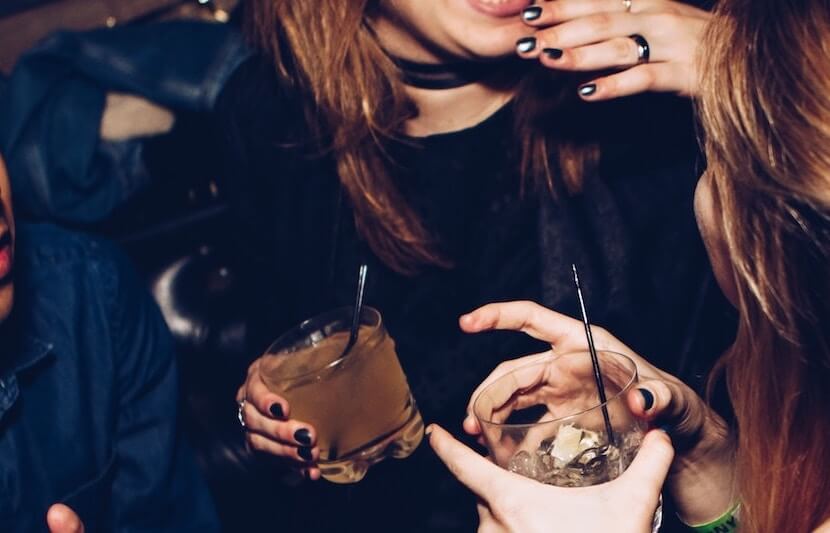Most college students who drink alcohol don’t intend to drink to the point of “blacking out,” and many don’t fully grasp the specific drinking habits that increase the risk of memory impairment, according to a new set of studies.
Blackouts, or episodes when an alcohol consumer can’t remember anything for some period of time, are known to be commonly experienced among college-aged drinkers.
Prior research has found that 30-50 percent of young adults have experienced alcohol-induced memory impairment within the past year alone. This can range from full-blown blackouts to brownouts, episodes of on-and-off memory loss where some moments can be recovered with reminders.
The three papers describing the studies were published in the journal Psychology of Addictive Behaviors, the journal Addictive Behaviors and the journal of Alcoholism: Clinical and Experimental Research.
Understanding student perceptions
Blackouts and brownouts can lead to serious consequences for students, ranging from hangovers to missed classes, fights, mental health problems, overdoses and sexual assault.
In order to help prevent students from blacking out, researchers from Brown University and the University of Missouri School of Medicine conducted a series of studies aimed at analyzing the experiences and perceptions of college students who have reported blacking out in the past six months.
Each study was based on analyzing records from a series of eight single-gender focus groups of college students from four-year colleges and universities around Providence, Rhode Island, and resulted in three separate papers.
First study
In the first study, the researchers found that students were aware that drinking hard liquor, drinking quickly, and drinking large amounts of alcohol at once were factors that could lead to blackouts.
However, many students reported not being aware that biological factors — including gender and genetics — can also increase the risk of blackouts, and that combining alcohol with other drugs could be a risk as well.
“Blackouts are a result of rapid rise in blood alcohol concentration (BAC). Thus, the pattern of drinking that leads to blackouts is not consistent with moderate or safe drinking,” said Kate Carey, a professor of behavioral and social sciences at Brown.
Second study
The second paper focused on analyzing student perspectives from their responses to these questions: “What is a person’s typical reaction when he/ she blacks out?” and “Overall, what makes a blackout a negative, neutral or positive experience?”
In this study, the researchers found that students generally perceived blackouts as a negative experience.
“Most students described them in negative terms, and said that did not really intend to drink to the point of memory loss. Rather, they seemed to be willing to black out as part of the drinking experience, but that was not the main point,” said Carey.
“But we were surprised that some described them as neutral (i.e., just a common side effect of drinking) or even positive (i.e., a marker of a fun night out),” she added.
Additionally, the researchers found that various social factors, including their friends’ drinking habits and perspectives and whether they did anything embarrassing during the blackout, influenced the way students perceived blackouts.
Third study
In the third study, the researchers analyzed the language students use to describe blackouts, and found that the phrase “blackout drinking” is often used to describe drinking heavily without the intention of actually losing memory.
However, when students refer to “a blackout,” they are more specifically describing episodes with periods of as much as an hour of complete memory loss. Shorter periods of memory loss or fuzzy memories were referred to as “brownouts.”
“Our qualitative research (the focus group discussions) suggested that students were aware that memory impairment did occur on a continuum, from fuzzy memories that could be recalled with prompts to extended periods of time without ability to recall what happened,” said Carey.
“As a result, we explored their perceptions of the two points on that continuum, and learned that attitudes were less negative and perceptions of risk were lower for brownouts than for blackouts.”
Qualitative data
In addition to conducting various free-form discussions with students, the researchers initiated an online survey of 350 full-time American college students who have experienced memory loss from drinking in the past year.
The survey found that 49 percent of students have experienced both blackouts and brownouts in the past month, but brownouts were more frequent.
While 32 percent experienced only brownouts, only 5 percent experienced only blackouts. Fourteen percent didn’t experience any alcohol-related memory impairment within the past month.
Moving forward
The researchers hope to use these insights to develop better educational opportunities for alcohol prevention programs to address specific drinking habits that lead to blackouts.
“We identified areas of general knowledge that could become targets of educational intervention,” said Carey.
Among these included analyzing the cause of blackouts, understanding who is more likely to experience blackouts, and assessing if/how blackouts are harmful to the brain.



